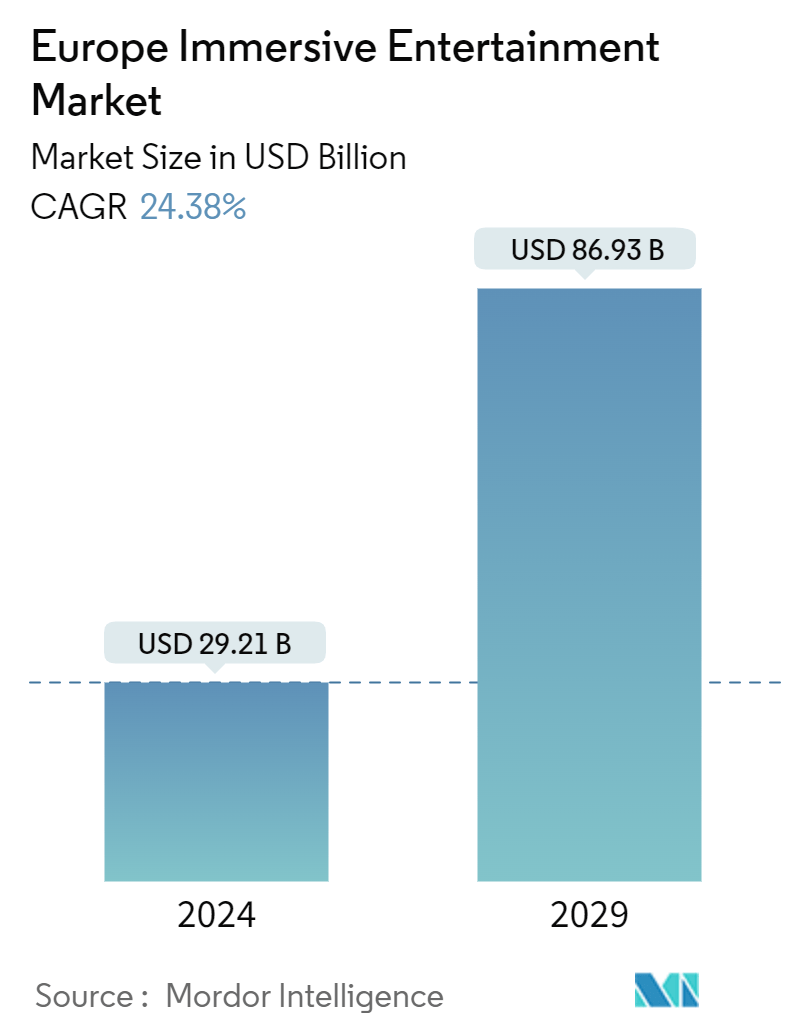Market Size of Europe Immersive Entertainment Industry

| Study Period | 2019 - 2029 |
| Base Year For Estimation | 2023 |
| Market Size (2024) | USD 29.21 Billion |
| Market Size (2029) | USD 86.93 Billion |
| CAGR (2024 - 2029) | 24.38 % |
| Market Concentration | Low |
Major Players
*Disclaimer: Major Players sorted in no particular order |
Europe Immersive Entertainment Market Analysis
The Europe Immersive Entertainment Market size is estimated at USD 29.21 billion in 2024, and is expected to reach USD 86.93 billion by 2029, growing at a CAGR of 24.38% during the forecast period (2024-2029).
- The European immersive entertainment market is witnessing significant growth as consumers increasingly seek interactive and engaging experiences. Immersive entertainment, which includes virtual reality (VR), augmented reality (AR), and mixed reality (MR) experiences, is being adopted across various sectors, such as gaming, live events, theme parks, and cinema. The market's expansion is fueled by technological advancements, increasing investment from both public and private sectors, and the growing demand for personalized and immersive experiences.
- In Europe, the rapid evolution of AR/VR technologies is the primary catalyst for the immersive entertainment market. With advancements in hardware—like VR headsets, AR glasses, and software, these technologies are crafting more realistic experiences, drawing in both consumers and businesses.
- Immersive gaming is emerging as a dominant trend in the entertainment landscape. Gaming platforms integrating VR and AR offer players a more interactive and lifelike environment, boosting engagement and propelling market growth.
- Location-based entertainment (LBE) is rising, utilizing immersive technologies to craft unique experiences in venues like theme parks. By providing innovative experiences outside the traditional home setting, LBE is set to drive market growth further.
- Enhanced internet connectivity plays a pivotal role in applications like VR gaming and AR navigation. The integration of 5G technology promises new avenues in sectors like healthcare and education. As 5G networks proliferate, they are poised to elevate immersive experiences, heralding a new era of interconnected virtual realms.
- However, the steep price tag of immersive entertainment technologies poses a hurdle. With VR headsets and AR glasses still on the pricier side, many potential users find them out of reach. Moreover, the necessity for high-performance computing devices to fully leverage these experiences amplifies the cost barrier for both consumers and businesses.

